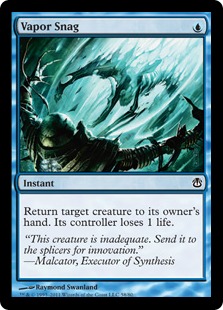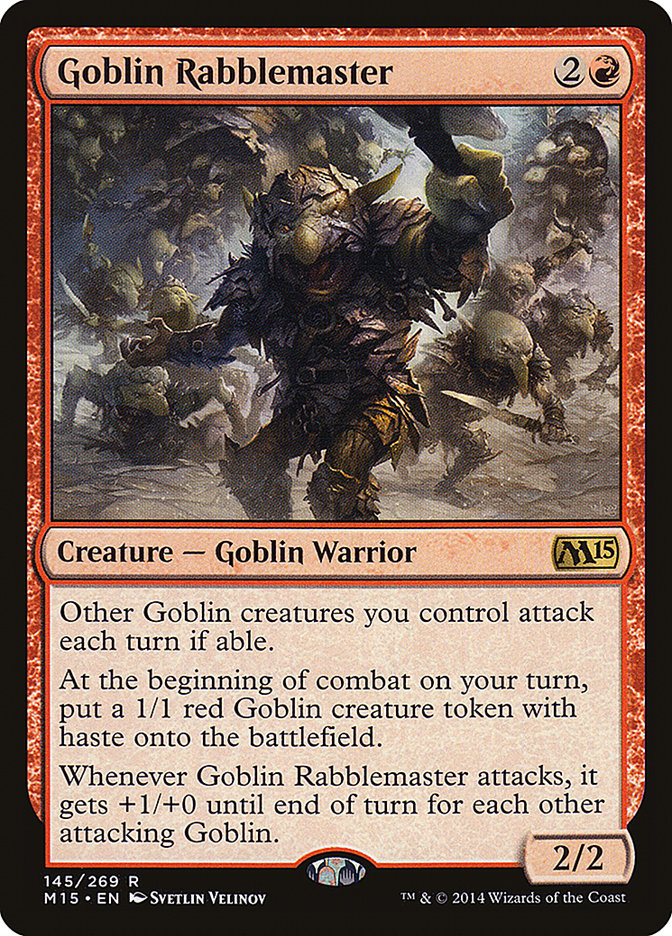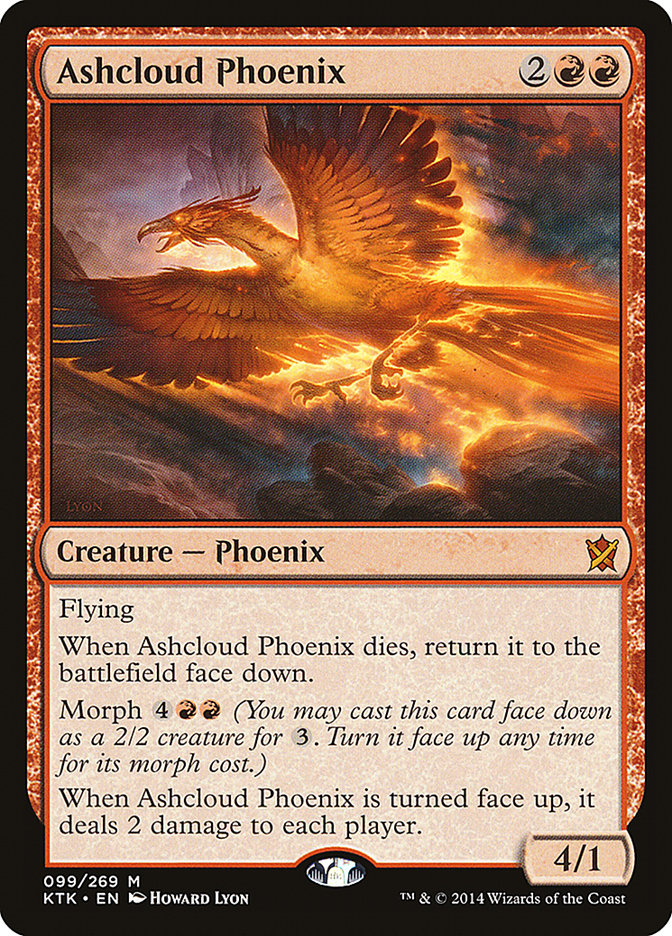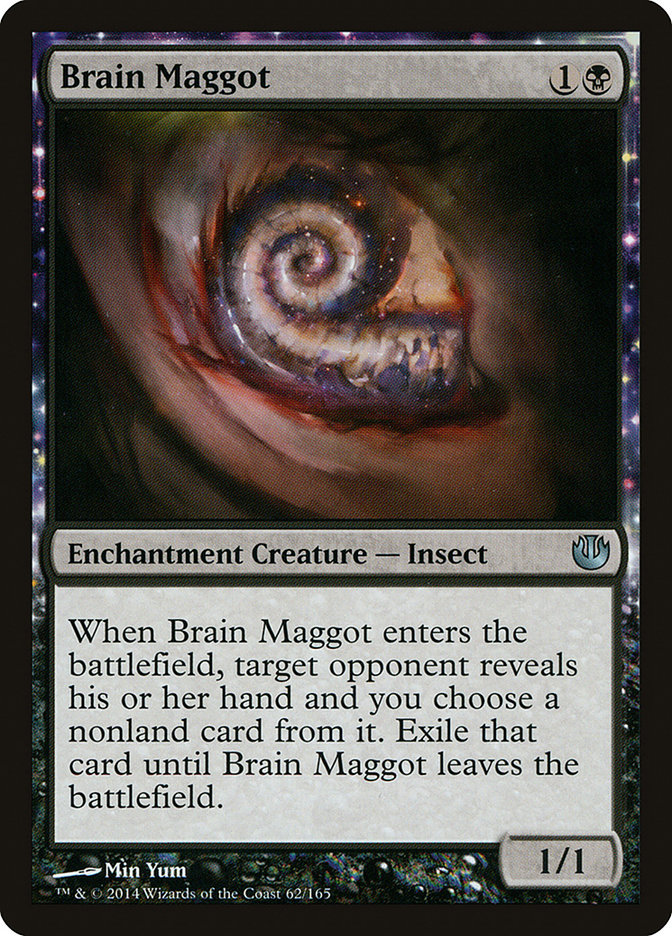I hope all of you enjoyed playing the Khans of Tarkir Prerelease this past weekend, but I was too busy lounging poolside in Jamaica. A cool wind on a warm
day, the sun trying hard to pierce the canopy on our cabana. I must say, vacations are great, and I had such a fun time with Kali Pandarson that it made it
very hard to come back to the real world.
For a week, I had turned that fire down, let it burn low until it was just a flicker; a candle. But it does not take much for a small fire to grow and
eventually swallow you whole. And upon my arrival back into reality, with dreams of champagne and rose petals slowly fading, the fire that I had brought
down so low suddenly surged.
And it burned my damn house down.
It is an odd sensation to have such a sweeping change in mentality come over you. Passion can be a dangerous ally, and one that regularly teeters on
obsession. Finding a balance between passion and obsession is paramount, as the latter can be a dangerous thing indeed. A break here and a week off there
is good for the worn down soul, cleansing even.
Absence makes the heart grow fonder, as they say.
So what was it that brought me back to life after such a soft slumber? You. It was all of you. It was all the messages, the pictures of people having such
a fun time at the Prerelease, the questions about new decks. It was your warmth that set me ablaze once again. And I hope it never stops burning.
I’ve been busy for the last few days since returning, and I have to say that I am quite pleased with where I’m at as far as both Standard and Legacy go.
After pulling off an undefeated record in the swiss at the Legacy Open in Atlanta, my only loss in the tournament came at the hands of Brad Nelson playing
the same 75 (fetchland choices aside) for Infect.
But with the first Standard Opens featuring Khans of Tarkir happening in New Jersey and Indianapolis this weekend, I suppose I can put Legacy on hold for a
little while and tell you all I’ve learned about Khans of Tarkir Standard. For starters, I have to say that playing in VS Videos has helped me tremendously
with figuring out new ideas and decks for upcoming seasons. Working with Brian Braun-Duin and Brad Nelson is awesome, and I think I can speak for them when
I say this:
We love making them.
They allow us a good bit of freedom to experiment with new ideas and test them in a competitive environment. When searching for great playtesters, it is
hard to ask for better partners in crime. Their dedication to the game and drive to get better is hard to match, and I find myself in envy each and every
week, aspiring to that level of commitment.
But alas, I am lazy.
Regardless, I do try pretty hard to produce new ideas, but building new archetypes isn’t really my forte. I strike gold every now and then, but most of my
ideas come from figuring out how to beat the decks other people are playing. New formats are difficult to put a finger on.
We didn’t even think Sphinx’s Revelation was all that great when it first came out!
Every new Standard season with the fall set comes with a set of difficult challenges. Finding the best cards is usually pretty easy, but the best decks end
up beating the best cards handily. Anger of the Gods is a fantastic Magic card, but it has seen virtually no play in the last year! It’s rare to see cards
that are great in older formats, such as Modern, flounder in a smaller format like Standard, but that is one of the coolest parts about the game.
Everything is contextual.
Every single card in Magic is only as good as the cards surrounding it, from the manabase to the supporting cast. All it takes is one good idea, one deck
that pairs a forgotten card with something fresh, to turn the world on its head.
When Vapor Snag was first printed, no one took a second look. Unsummon that deals a damage. Big whoop. That is, until we got the magnifying glass that was
Snapcaster Mage, and suddenly it was necessary to take a second look at every instant and sorcery that Standard had to offer. And don’t even get me started
on Phyrexian mana spells.
But enough about the past. We’re here for Khans, and we’re glad that Pack Rat is gone for good. There doesn’t seem to be a great shell for Thoughtseize
just yet, but that could change in an instant. At the moment, it seems as if Khans of Tarkir and the rotation of Return to Ravnica has turned everything
we’ve known about Standard on its head. Most of the devotion strategies are crippled, and many of the pillars we once knew are gone or fading fast.
Without the pillars of the last Standard to rely on, we’re forced to try new things. And those new things can be frightening and wonderful at the same
time. It keeps us from getting lazy and helps us find our own voice when building new decks. At the moment, I’m still trying to find that voice, but the
sirens of Standard past keep drawing me back in. I’m afraid to try new things, and I’m afraid I’m going to fail.
But fear is a powerful motivator and one that we should embrace. It is through fear that we gain heightened levels of function, adrenaline coursing through
our veins, so that we think and act more quickly, even without the realization that we are doing so. Even now, as I write this article for you, and for
myself, the fear of failing on the opening weekend of this new frontier is driving me towards something greater.
As I’ve talked with BBD and Brad over the last few weeks, we’ve built a couple of really solid decks that could have great potential. The problem here is
that writing about these decks can begin to feel like stepping on their toes. Many of the ideas we share and collaborate on get tangled together, so
instead of just writing out a bunch of lists, I’ll share with you what I’ve learned about the format with maybe a deck or two at the end.
On Courser of Kruphix
This was the defining card of Pro Tour Journey into Nyx, acting as an engine to hit your land drops and a great defensive measure against aggressive
strategies. But there was one major problem with the Block Constructed format: there was only one real aggressive strategy (Heroic), and it was pretty weak
to spot removal. When adding two extra sets into the mix, I’m not so sure that Courser of Kruphix is going to be what people want it to be.
Yes, it will help you hit land drops, gain a few points of life, and be a reasonable blocker most of the time, but the current state of aggressive decks is
not exactly the same as it was before. Courser of Kruphix is certainly still good, as it Sylvan Caryatid, but I feel like people will hinge on this
combination rather than explore arguably better spells.
The thing about Khans of Tarkir is that it rewards people for playing three colors but in a way that is different than what we’re used to. We have Savage
Knuckleblade and Anafenza, the Foremost which are both very different cards than Courser of Kruphix. In a lot of ways, I think playing either of these
cards alongside Courser of Kruphix is breaking a fundamental rule in deckbuilding. These cards are very aggressive and sit on top of Courser of
Kruphix on your curve. Given the choice, which one will you decide to play?
But Courser of Kruphix will still have a few different homes, because not all green decks want Anafenza or Savage Knuckleblade. There will be midrange
strategies that try to win the long game with Elspeth, Sun’s Champion and the like, but I’m not sure Elspeth is a luxury we can afford anymore.
In the previous Standard format, our three color decks had access to ten different dual lands that gave us the option of putting them into play tapped or
untapped so long as we had life that we were willing to pay. Now, the fluid access to your colors has increased with the Clanlands but at the expense of
slowing your deck down significantly. In order to compensate for how slow our decks end up being, we are forced to play Elvish Mystic and Sylvan Caryatid.
But what happens when you don’t draw them in your opening hand? Do you mulligan?
It will be no surprise to me if the aggressive decks in the format just mangle people in the first week. Whether that means Rabble Red, Mono-Black Aggro,
or even Heroic, it doesn’t really matter. I’ve said this a few times since the spoilers for Khans of Tarkir began, but people will try to be cute by
playing bigger/better spells than their opponent, and they are going to fold to Goblin Rabblemaster.
It is as simple as that.
Hedge Your Bets
I would hate to be the guy that says the entirety of the new set is bad because that just isn’t true. What I do think is that people are approaching this
new format entirely the wrong way. I will most likely be eating crow once we get to Pro Tour Khans of Tarkir in a few weeks, but I’m willing to bet that
one and two color decks will be at a significant advantage in the opening weeks of the format.
For one thing, Thoughtseize is still a card we have to be concerned with. Too many ramp spells and not enough things to do with our mana will lead to some
awkward games against Thoughtseize. There are so many ways for green ramp decks to fold in on themselves, whether that means missing land drops, failing to
draw accelerators, or even just drawing the wrong colors. And having a land coming into play tapped on a crucial turn will occasionally end the game on the
spot!
Control decks no longer have access to a four mana Wrath effect or a huge draw engine at the end of the curve. We can’t play twelve Temples in an effort to
find Supreme Verdict, because that extra turn for End Hostilities means everything. Anger of the Gods might be a solid replacement, but it will look pretty
awkward when staring down Polukranos, Siege Rhino and the like. So what do we do?
As I said earlier, I think having access to only two colors is the way to start. Your mana will be a little “worse,” in that you will lack vital colors if
you stretch your spells on color cost, but that can be alleviated in a few different ways. We could play removal spells that are easier to cast, or we
could “cheat” with our mana by playing an extra copy of Urborg, Tomb of Yawgmoth. If you decide that being aggressive is a much better proposition, Mana
Confluence is probably fine considering how many people are probably going to be playing Courser of Kruphix instead of Firedrinker Satyr.
Rabble Rabble
Rabble Red was the defining aggressive deck at the tail-end of the last Standard format. Whether the version of the deck featured Burning-Tree Emissary or
went a little heavier on burn with Young Pyromancer, one thing was for certain:
Goblin Rabblemaster and Stoke the Flames are absurd.
While Stoke the Flames hasn’t made its way into older formats (yet), I’ve already seen multiple Legacy decks featuring Goblin Rabblemaster. This is
probably due to a lack of removal, but it is also attributed to the strength of Chalice of the Void. With Chalice of the Void effectively shutting down
your opponent’s removal, Goblin Rabblemaster is left unchecked and ends the game very quickly.
In Standard, we are often subjected to more removal than older formats simply because Standard has evolved in a way that puts emphasis on creatures rather
than spells. In Legacy, we lean towards Force of Will, Spell Pierce, and Daze to help fight combo decks. In Standard, that is not a problem we have to
contend with, so we are left fighting against mostly creatures and planeswalkers. This is one of the reasons why Hero’s Downfall is so spectacular.
But even now, as we are leaning heavily towards three color decks, the removal spells will become harder to cast. And when removal spells are harder to
cast, aggressive decks with a faster manabase have a significant edge. Just imagine how difficult it will be to cast Bile Blight when your deck contains
four or more Forests, and almost all of your lands that tap for black come into play tapped. This, at the very least, should put a lot of pressure on decks
to play more than one copy of Urborg, or lean heavily towards black rather than any other color.
And even if you are playing Llanowar Wastes or Caves of Koilos, dealing yourself a damage every turn to cast your spells only helps your opponent’s
gameplan. And so all of these factors, and many others, lead me down a road with but two logical paths; a fork in the road.
We play two colors, or we play one.
The Path Most Traveled
If a black deck can be found that utilizes Thoughtseize, it will be one of the pillars of the format. With Clanlands taking the place of many Temples, as
well as the lack of Mutavault, drawing out of a virtual mana flood will be more difficult. I’m unsure what the best pairing color for black is at the
moment. Green pushes you towards Elvish Mystic and Courser of Kruphix, making your removal harder to cast, while the threats out of white are all pretty
mediocre aside from Brimaz (same problem as Courser). But Red might be the saving grace.
Creatures (12)
Planeswalkers (3)
Lands (25)
Spells (20)

So here’s the deal. Whether or not you like Thoughtseize is irrelevant. The card is powerful, and you are going to have to play against it (or with it) in
a lot of Standard matches over the next year. Once we flesh out the format and figure out what we’re up against, we’ll have a better idea of how to beat
all of the best decks. For now, let’s assume Thoughtseize and company are still good.
The only thing missing from the green and white variants was a core of powerful creatures that could end the game once you established control. Brimaz and
Polukranos are great, but have the drawback of being legendary while also lacking resiliency in the face of opposing removal. Enter Goblin Rabblemaster,
Ashcloud Phoenix, and Sarkhan, the Dragonspeaker.
Thoughtseize into Sign in Blood is an incredible start, but we need ways to make it relevant. Drawing mediocre, expensive cards off your Sign in Blood is
not what I want to be doing. This deck is lean, and puts Thoughtseize into overdrive by having solid threats to back it up.
These three major threats are stellar. Ashcloud Phoenix is one of the best creatures I have seen in a long time and is probably on par with Voice of
Resurgence as far as power level, as well as its ability to play the aggro or control game. While Ashcloud Phoenix doesn’t play well against Banishing
Light or Magma Spray, it will be one of the best cards in your deck in Game 1.
What Goblin Rabblemaster does for this deck is give you a significant clock, much like Brimaz, while being easier to cast. Additionally, if they don’t kill
Goblin Rabblemaster on the first turn it is in play, you will get a goblin token or two out of the deal. When you have efficient spot removal to take care
of their blockers, you can end the game in just a few swings.
Sarkhan, the Dragonspeaker functions similarly to Ashcloud Phoenix in that it can play the aggro or control role. Being able to kill an opposing threat so
that your Goblin Rabblemaster can rumble through is huge, but it can turn the corner and start crushing your opponent’s life total at any point. I think
that Sarkhan is a very strong card for the new format, but it only gets better when we have discard effects to slow our opponent down or take away their
limited number of removal spells for it.
I wanted to take a minute to talk about Brain Maggot and what exactly it does for this deck. For one, you want to keep your curve low. We don’t have Pack
Rat anymore, so having a “threat” come down on Turn 2 is decent, but it also helps protect your main threats from opposing removal. Alongside Thoughtseize,
it is pretty easy to take away their answers before you start pummeling them with Goblin Rabblemaster.
Brain Maggot, much like Young Pyromancer, acts as a lightning rod for opposing removal in every point of the game. Whether you’re forcing their hand with
Bile Blight early, or just two-card comboing them on Turn 5, Brain Maggot will do some serious work. This is all just theory-crafting, but I want as many
ways to protect Goblin Rabblemaster as possible, and Brain Maggot just feels like a natural fit.
As for the sideboard, we have the ability to get aggressive with Bloodsoaked Champion and Chandra, Pyromaster against control decks, which I love. I’m
unsure what matchups I don’t want Chandra in, which means it should probably fit somewhere into the maindeck, but I like where this version is at. Until I
play more with it, I’m going to leave it as is.
Anger of the Gods could easily be Drown in Sorrow, as Anger exiles your Phoenix, but I’m deathly afraid of Sidisi, Brood Tyrant in the early stages of this
format. People want to play Murderous Cut, and I think Sidisi is the best shell for the card. Sidisi builds an archetype all by herself, and we have to
respect that fact when building our sideboard. The rest of the removal spells are great against opposing aggressive decks and give us a way to trim down on
our more expensive threats.
This deck might not be as strong as I think it is, as many strategies look great on paper but tend to flounder once you pit it against real competition,
but I’m fairly confident that this is one of the best Thoughtseize decks that the format has to offer. And when that’s the case, we all know what happens
from there…
Sorry for ruining Standard!







